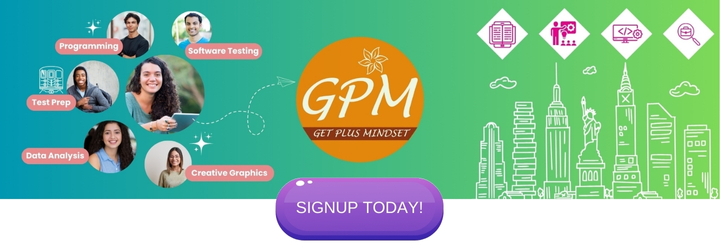In the era of data-driven decision-making, building a versatile AI that can handle the tasks of a data scientist—such as querying databases, analyzing data, generating reports, and running machine learning models—can save both time and effort. In this article, we’ll guide you through creating such an AI assistant using SQL for querying databases, Python for data analysis, HTML for report generation, and machine learning for predictive analytics.
Key Capabilities of the AI
- Natural Language Processing (NLP) to SQL Query Generation
- Data Analysis Using Python
- Dynamic HTML Report Generation
- Machine Learning Model Execution
Each of these components builds on the strengths of existing technologies to create a unified, powerful AI tool.
1. Natural Language to SQL Query Generation
At the core of this AI is its ability to translate natural language questions into SQL queries. To accomplish this, you’ll need a Natural Language Processing (NLP) model that can understand the intent behind a query, and a system that can convert this intent into SQL commands.
How It Works:
-
Input: A user asks a question like, “What was the total sales in August?”
-
NLP Processing: Using an NLP model, the AI identifies the key components: “total sales” (target column) and “August” (time filter).
-
SQL Generation: The system generates a SQL query such as:
SELECT SUM(sales) FROM sales_table WHERE MONTH(sales_date) = '08' AND YEAR(sales_date) = '2023';Implementation
To implement this, we can use OpenAI’s chat completions API and instruct it to generate SQL based on the provided schema in a system message. The assistant can handle the query generation after understanding the user’s natural language query.
Example Schema Passed in a System Message:
{
"tables": {
"sales_table": {
"columns": {
"sales": "float",
"sales_date": "date",
"region": "varchar",
"product_id": "int"
}
},
"products_table": {
"columns": {
"product_id": "int",
"product_name": "varchar",
"category": "varchar"
}
}
}
}
Example Chat Completion:
- User Query: “Show me the total sales by region for August 2023.”
- Generated SQL Query:
SELECT region, SUM(sales) FROM sales_table
WHERE MONTH(sales_date) = '08' AND YEAR(sales_date) = '2023'
GROUP BY region;This system allows the AI to handle both simple and complex database queries.
2. Data Analysis Using Python
Once the data is retrieved from the SQL query, the next step is to perform data analysis. Python’s data analysis libraries—such as Pandas, NumPy, and Matplotlib—make this process highly efficient.
Example: Calculating Descriptive Statistics
Let’s say the AI needs to analyze sales data and provide insights such as mean, median, or standard deviation.
import pandas as pd
# Data retrieved from SQL query
data = {
'region': ['East', 'West', 'North', 'South'],
'sales': [50000, 45000, 62000, 51000]
}
df = pd.DataFrame(data)
# Descriptive statistics
mean_sales = df['sales'].mean()
median_sales = df['sales'].median()
std_sales = df['sales'].std()
print(f"Mean Sales: {mean_sales}")
print(f"Median Sales: {median_sales}")
print(f"Standard Deviation of Sales: {std_sales}")Visualization
The AI can also generate visualizations using Matplotlib or Seaborn to better present the insights.
import matplotlib.pyplot as plt
df.plot(kind='bar', x='region', y='sales', title='Sales by Region')
plt.show()3. HTML Report Generation
Once the data is analyzed, the AI can automatically generate an HTML report summarizing the findings. This is useful for sharing results in a format that is both readable and professional.
Example HTML Report:
The AI can take the analysis and create a dynamic HTML page that presents the key results.
html_content = f"""
<html>
<head>
<title>Sales Report for August 2023</title>
</head>
<body>
<h1>Sales Report for August 2023</h1>
<p>Mean Sales: {mean_sales}</p>
<p>Median Sales: {median_sales}</p>
<p>Standard Deviation of Sales: {std_sales}</p>
<h2>Sales by Region</h2>
<img src='sales_by_region_chart.png' alt='Sales by Region'>
</body>
</html>
"""
# Write HTML to file
with open('report.html', 'w') as file:
file.write(html_content)
The HTML report can also include charts and other visual elements for a more comprehensive presentation.
4. Machine Learning Integration
The AI can also perform machine learning tasks, such as predicting future sales or classifying data. Python libraries like scikit-learn and TensorFlow make it easy to build and run machine learning models.
Example: Sales Prediction with Linear Regression
Let’s say we want to predict future sales based on historical data.
from sklearn.model_selection import train_test_split
from sklearn.linear_model import LinearRegression
# Historical sales data (X: month, Y: sales)
X = [[1], [2], [3], [4], [5], [6], [7], [8]]
Y = [45000, 47000, 52000, 51000, 56000, 59000, 61000, 63000]
# Train-test split
X_train, X_test, Y_train, Y_test = train_test_split(X, Y, test_size=0.2, random_state=42)
# Linear regression model
model = LinearRegression()
model.fit(X_train, Y_train)
# Predict future sales
future_sales = model.predict([[9]]) # Predict for the 9th month
print(f"Predicted Sales for Month 9: {future_sales[0]}")The AI can automate the entire process—from querying data to training the model and generating predictions.
Bringing It All Together: Creating the AI
Here’s how you can integrate all these components into a cohesive AI system:
- Frontend: You can use a simple interface (e.g., Flask for web apps or a chatbot UI) to allow users to input queries.
- Backend:
- NLP: Use an NLP model (e.g., GPT) to parse user questions and generate SQL queries.
- SQL Execution: Use a database engine (e.g., PostgreSQL, MySQL) to execute the generated queries and return results.
- Python for Data Analysis: Once the data is retrieved, use Python for data analysis and machine learning.
- HTML Reporting: Generate dynamic HTML reports summarizing the findings.
- ML Models: Use scikit-learn, TensorFlow, or other machine learning libraries to build and apply predictive models.
By combining these technologies, you can build a powerful Data Scientist AI capable of querying databases, analyzing data, generating dynamic reports, and running machine learning models—all based on natural language input.
The Data Scientist AI represents a convergence of key data science technologies: SQL for database interaction, Python for data processing and analysis, HTML for reporting, and machine learning for predictive capabilities. Such a system not only simplifies data querying but also enhances the depth of analysis and reporting by making these tools accessible through natural language. This automation ultimately accelerates data-driven decision-making, enabling businesses to act on insights more efficiently.




